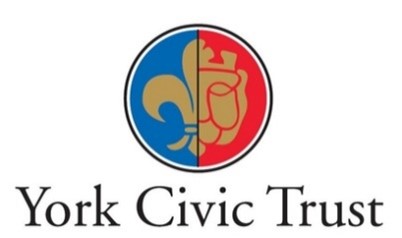Discover York's historic Snickelways
York BID have transformed seven of York city centre’s key snickelways through installing permanent festoon lighting, conducting a deep clean and, in partnership with York Civic Trust and University of York, introducing a free history trail.

A Complete Transformation
York’s Snickelways are a key part of the city’s unique character and history; the word “Snickelway” was coined by Mark Jones in 1983 – a combination of snicket, ginnel, and alleyway.
Although these footways are the quickest way to move through the city, they were dark, neglected, and often attracted criminal activity. The BID’s Street Cleaning Team remove drug litter, broken glass, and biological hazards from these footways daily.
The Snickelway Rejuvenation Project aims to prevent and deter criminal activity; help residents and visitors feel safe; and improve the appearance and use of the city’s Snickelways.
Collaborative Working
Driving lasting change through collective strength.
This project was made possible thanks to funding grants from the Police, Fire and Crime Commissioner, York Safer Business Partnership, and York Civic Trust. It fits with the BID’s Purple Flag objectives, fostering a safer, cleaner city centre and a positive nighttime experience for all.
The BID has worked with York Civic Trust and the University of York to research and interpret these Snickelways through a free history trail in:
- Coffee Yard
- Lunds Court
- Finkle Street
- Nether Hornpot Lane
- Peter Lane
- Pope's Head Alley
- Le Kyrk Lane
Find out more about the historical significance of York’s Snickelways below:
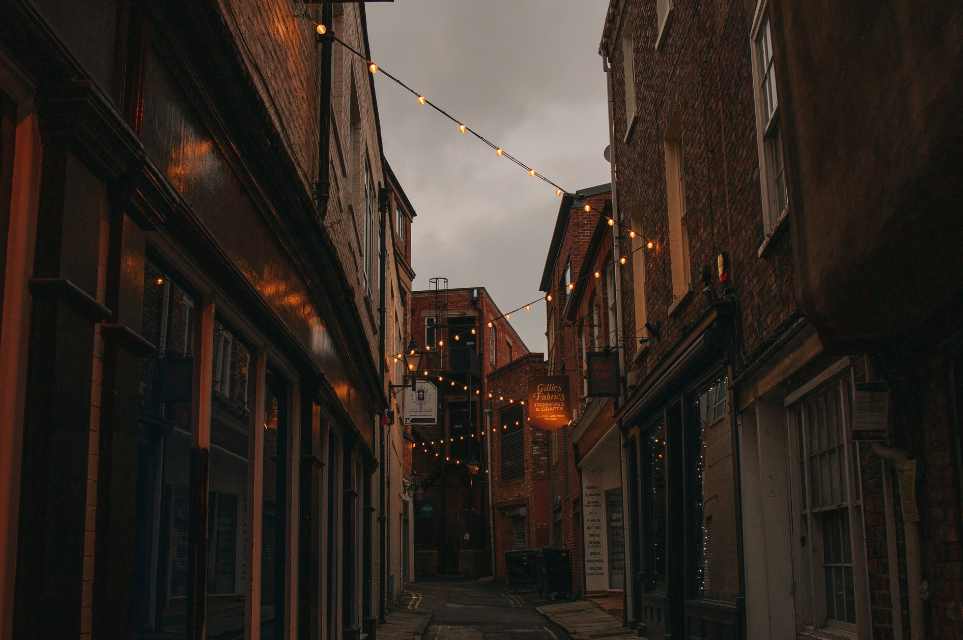
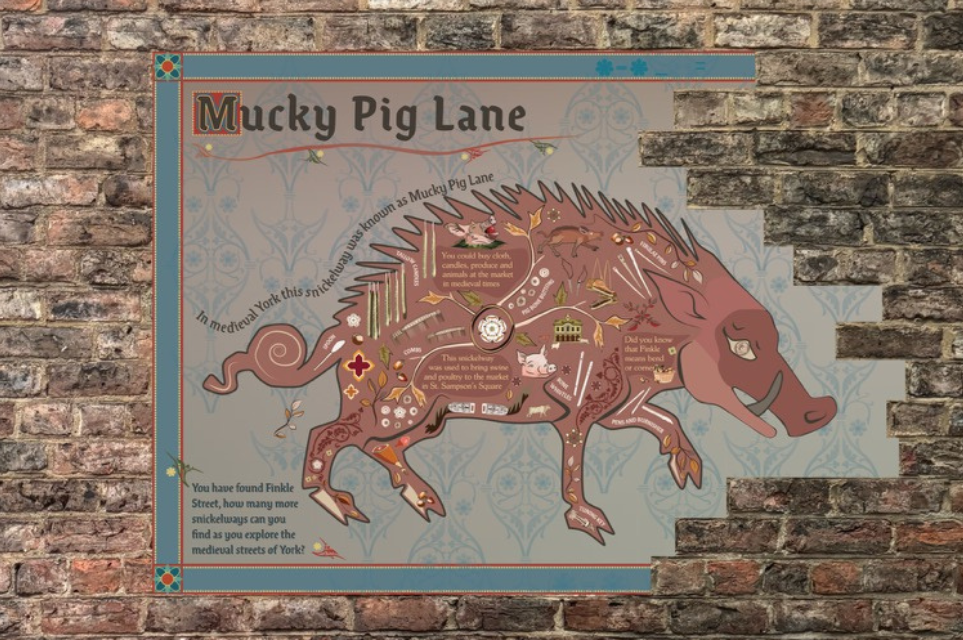
Lost Markets
York has a long history as a market city – the snickelways that still connect to St Sampson’s Square once gave access for people and goods moving to and from the market.
Finkle Street was once used as a control passage to move cattle and other livestock out of ‘Thursday Market,’ the weekly market at St Sampson’s Square between the 14th and 19th centuries. It’s had this name since at least the 14th Century and, by the 1750s, was also known as Mucky Pig Lane due to the pigs passing through to Swinegate which held the pig market.
Nether Hornpot Lane was once the street of the Hornworkers and their rubbish pits – hence the close proximity to Thursday Market where cattle were bought and sold. Cattle horns were soaked in a ‘tan pit’ to produce a malleable material, similar to plastic, that was used for crafting things like buttons, combs, and cutlery handles.
Lost Buildings
These three Snickelways once led to the now lost Church of St Peter-the-Little. 'The Little' distinguished the Church from York Minster, the city's other (much larger) Church dedicated to St Peter.
Although no remains of the church stand today, the names of these Snickelways point to its existence: Peter Lane likely got its name from being used as a route to the church and Le Kyrk Lane can be directly translated to ‘the Church Lane,’ while Pope’s Head Alley is also likely to relate to its proximity to the once Catholic church of St Peter-the-Little.
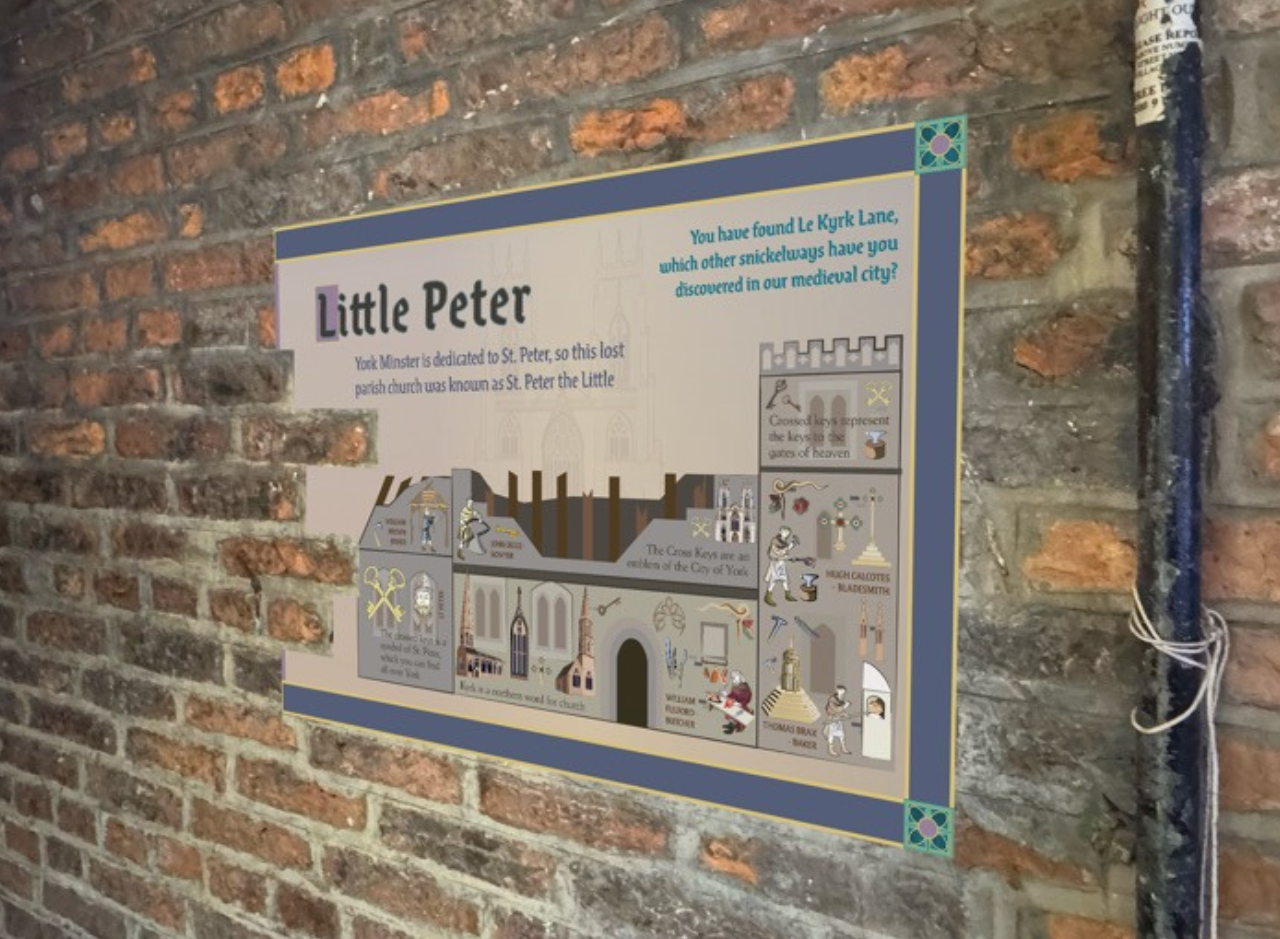
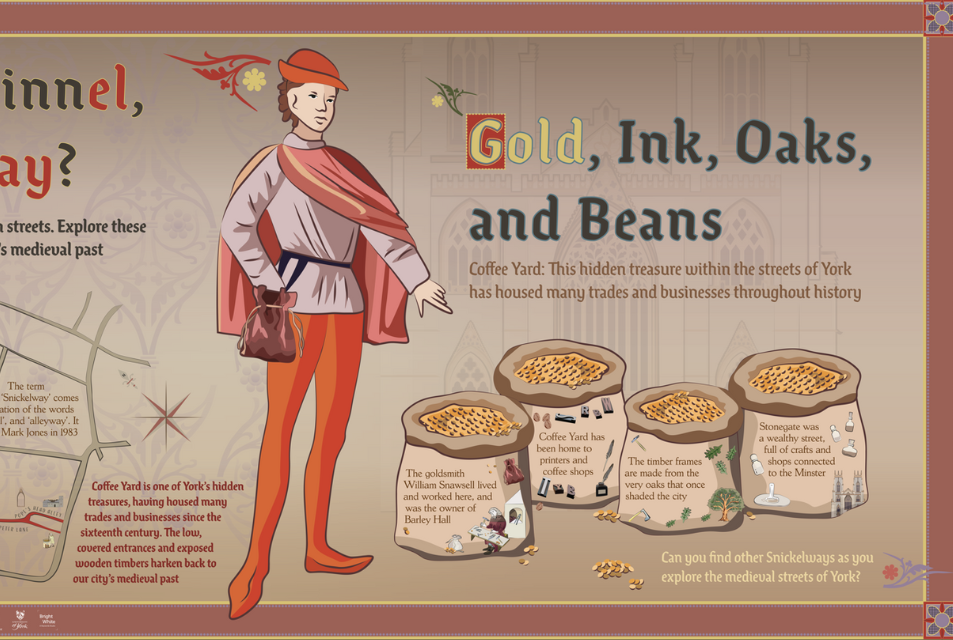
Making the City
These two Snickelways evoke Medieval York through their low, covered entrances and exposed wooden timbers.
Coffee Yard has a rich printing history; from the 1720s, Thomas Gent ran a printing press here, from which he published a weekly newspaper. You might notice the red ‘Printer’s Devil’ on the Stonegate entrance to the snickelway – the symbol of the devil was often associated with printing as the ink blackened worker’s fingers, giving them a demonic appearance!
Lund’s Court was formerly known as Mad Alice Lane – it’s unclear where this snickelway got its name from although there are plenty of rumours that an ‘Alice Smith’ lived here, who was hung for murdering her husband. Although there is no evidence that an ‘Alice Smith’ was executed at York Castle in the 1800s, it is likely ‘Alice’ was a local personality who lived nearby.
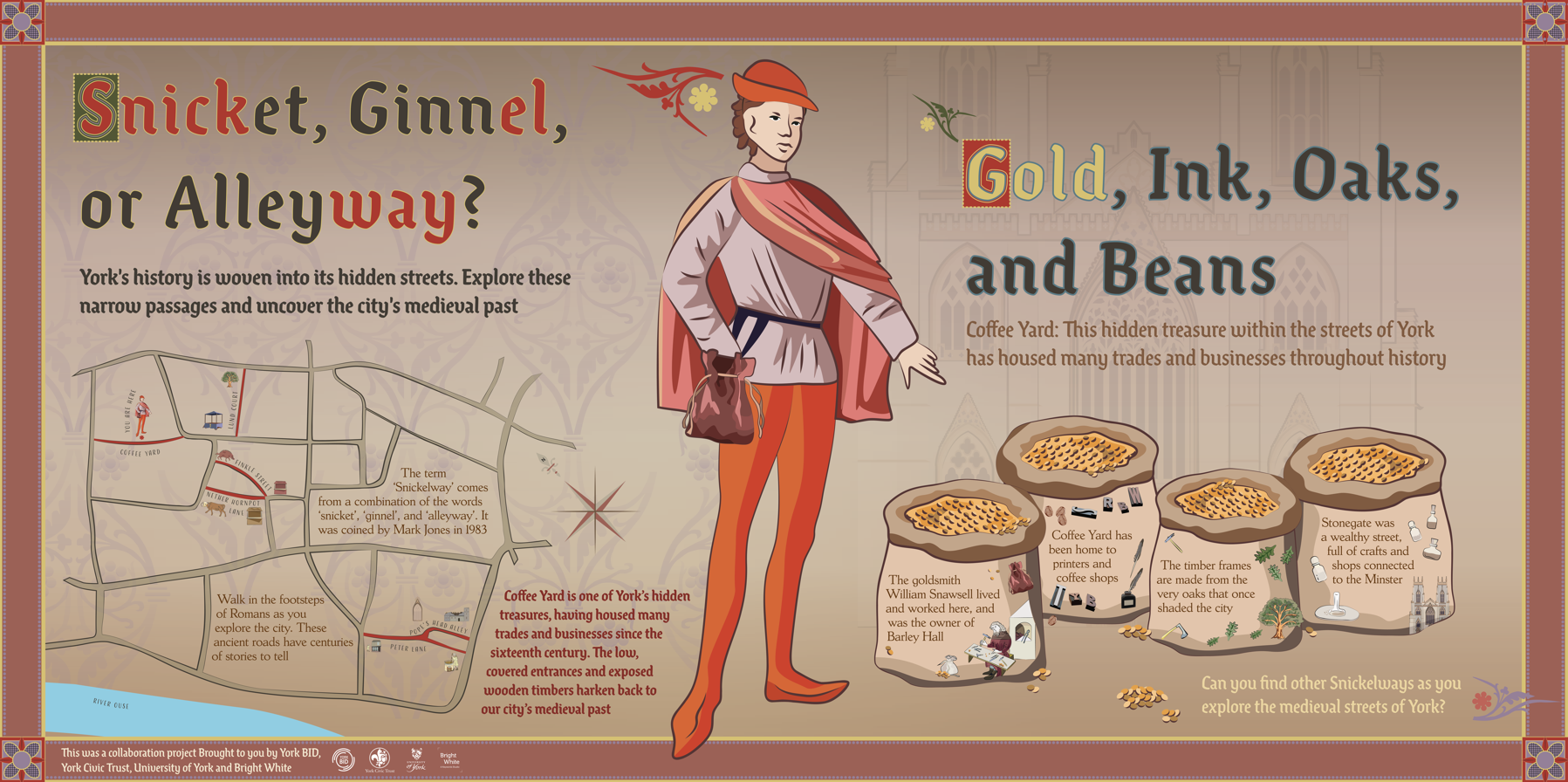
Fancy More Snickelways Fun?
For even more Snickelway fun, check out Little Vikings Snickelways & Silly Street Names trail, a free, self-guided adventure that takes families through York's maze of Snickelways. Download the map here or pick up a copy from the Visitor Information Centre on Parliament Street.




